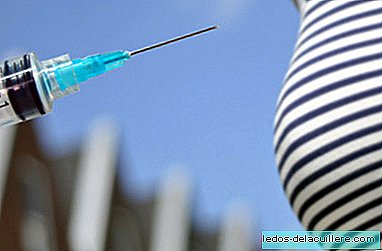
United Nations and WHO alert on all those synthetic chemicals whose effects on the hormonal system are to be investigated, and could have health repercussions.
We refer to the so-called endocrine disruptors (PE) that are capable of disrupting the normal functioning of the hormonal system, and increase the risk of adverse health effects.
The joint report that has been prepared by the two international organizations, calls for further research to understand the relationships between PEs (present in many domestic and industrial products) and certain diseases and disorders. Some PEs are natural, but there are also synthetic PEs that can be found in pesticides, electronic components, personal care products or cosmetics, as well as in food, either as additives or contaminants.
PEs and their presence in modern life
For example, we will cite the name Bisphenol A (BPA) We found in many products for daily use. This controversial compound is found in bottles (its best known use), water bottles, fillings for dental fillings, inner layer of beverage cans, electronic appliances, plane tickets, box tickets etc.
According to WHO, PEs would not only be potentially affecting human health, but also they can also pollute the environment especially through industrial and urban discharges, agricultural drains or incineration and landfill.
Human exposure can be caused by ingestion of food, water or dust, by inhalation of gases or particles present in the air or by contact with the skin.
The responsibility to protect future generations rests with us all
Why can it be dangerous for human health?
It is not that I care little about natural health or the impact of PEs on other animal or plant species, because I consider that the balance of the environment is lost when the waters of a river are affected, or when the decrease in Alaska is related Otter populations with these disruptors.
But for those most interested in knowing how they can affect us, I will tell you that Some health problems related to PE include nervous system development problems, thyroid cancer, and attention deficit hyperactivity disorder..
Reducing exposure to PE
I think, at this point it would be very difficult to completely avoid contact with them, but it can help us to know that In general, airtight glass bottles and containers are safer, that you can find pacifiers and dental fillings (asking the dentist) without BPA, and that it is convenient that children do not suck tickets or tickets, which would cause ingestion, which - even in small quantities - could contribute to accumulate PE in the organism.
It is clear that we should also avoid direct contact - by inhalation - (especially in children) with chemical insecticides.
In my opinion, The best we can do is keep informed (contrasting sources of information), for example, it is known that there are positive (as negative) lists of PVC polymers and additives, that is to say that apparently a plastic film or plastic bottle intended to cover or contain food or liquids intended for human consumption are sure. But would we have access to reliable data if we wanted to know more?
Human health depends on the proper functioning of the endocrine system, which regulates the release of essential hormones for functions such as metabolism, growth and development, sleep or mood. In the spirit of UNEP, and WHO, is calling for the need for research to obtain a more complete picture of the health and environmental impacts of endocrine disruptors.












